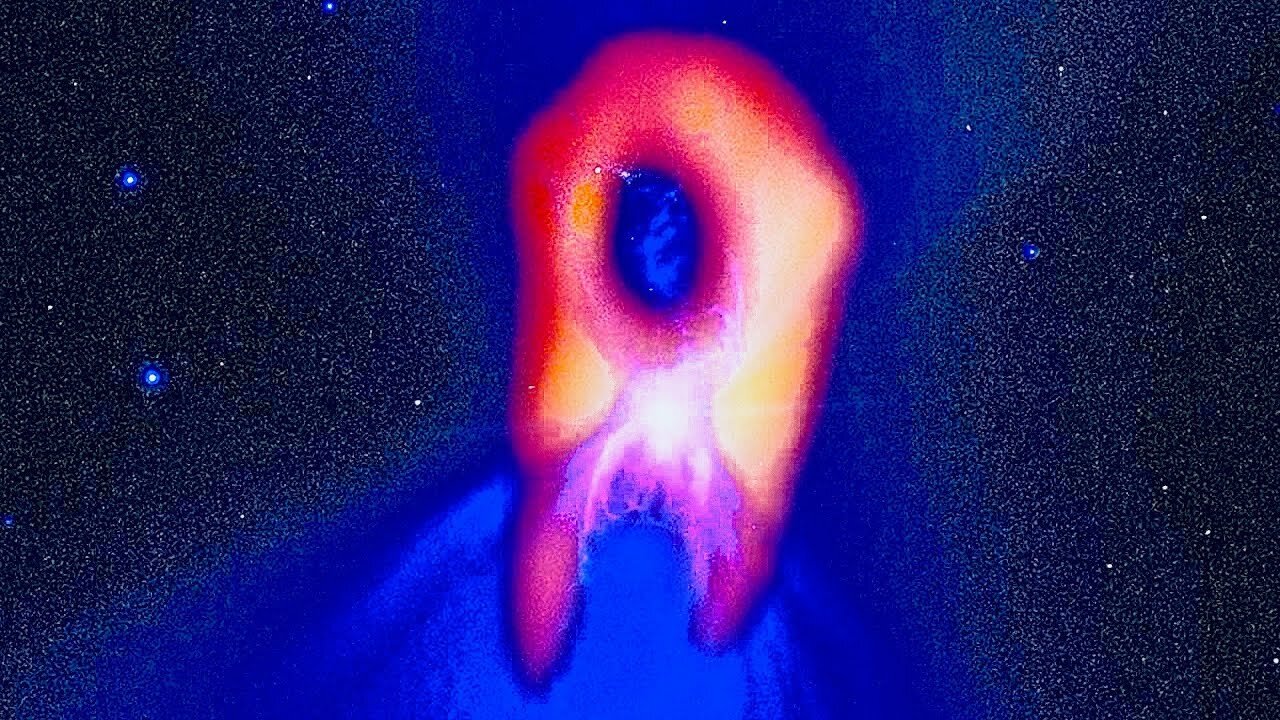Premium Only Content

Coldest Spot in the Known Universe - The Boomerang Nebula
Boomerang Nebula: Astronomers Observe Coldest Place in Universe - The Boomerang Nebula, also known as the Bow Tie Nebula, is a planetary nebula located in the constellation Centaurus about 5,000 light-years from Earth. Planetary nebulae are the end-of-life phases of Sun-like stars that have sloughed off their outer layers. What remains at their centers are white dwarf stars, which emit intense ultraviolet radiation that causes the gas in the nebulae to glow and emit light in brilliant colors.
Measurements show the Boomerang Nebula has an incredible temperature of minus 458 degrees Fahrenheit (1 degree Kelvin). It is the coldest known object in the Universe. The nebula is colder than the faint afterglow of the Big Bang, which is the natural background temperature of space.
“This ultra-cold object is extremely intriguing and we’re learning much more about its true nature with the Atacama Large Millimeter-submillimeter Array (ALMA). What seemed like a double lobe, or boomerang shape, from Earth-based optical telescopes, is actually a much broader structure that is expanding rapidly into space,” said Dr Raghvendra Sahai from NASA’s Jet Propulsion Laboratory in Pasadena, who is the lead author of a paper appearing in the Astrophysical Journal (arXiv.org).
The group discovered a dense lane of millimeter-sized dust grains surrounding the nebula’s central star, which explains why the outer cloud has an hourglass shape in visible light. The dust grains have created a mask that shades a portion of the central star and allows its light to leak out only in narrow but opposite directions into the cloud, giving it an hourglass appearance.
“This is important for the understanding of how stars die and become planetary nebulae. Using ALMA, we were quite literally and figuratively able to shed new light on the death throes of a Sun-like star,” Dr Sahai said.
The team also found that the outer fringes of the Boomerang Nebula are beginning to warm, even though they are still slightly colder than the cosmic microwave background.
This warming may be due to the photoelectric effect – an effect first proposed by Einstein in which light is absorbed by solid material, which then re-emits electrons.
The gas cloud – which is the result of a jet that is being fired by the central star – is expanding at a rate that is about 10 times faster than what a single star could produce on its own. After conducting measurements with ALMA that revealed regions of the outflow that were never before seen (out to a distance of about 120,000 AUs), the team concluded that this is what is driving temperatures to levels lower than that of background radiation
They further argue that this was the result of the central star having collided with a binary companion in the past, and were even able to deduce what the primary was like before this took place. The primary, they claim, was a Red Giant Branch (RGB) or early-RGB star – i.e. a star in the final phase of its life cycle – whose expansion caused its binary companion to be pulled in by its gravity.
Music: 7 In Touch by Dhruva Aliman
Amazon - https://amzn.to/3ex2DEb
https://music.apple.com/us/artist/dhruva-aliman/363563637
https://dhruvaaliman.bandcamp.com/album/neptunes-overtone
http://www.dhruvaaliman.com/
Spotify - https://open.spotify.com/artist/5XiFCr9iBKE6Cupltgnlet
-
 34:36
34:36
Stephen Gardner
6 hours ago🔥Trump makes HUGE THREAT...Voters are loving it!
70.9K172 -
 1:53:58
1:53:58
Kim Iversen
9 hours agoDems React To Trump Landslide. Will They Learn Or Get Worse?
127K146 -
 1:51:02
1:51:02
Fresh and Fit
9 hours agoTop 3 Reasons Why Your Girl Shouldn’t Lead In A Relationship!
90.1K13 -
 56:23
56:23
LFA TV
23 hours agoToo Big to Rig | Trumpet Daily 11.6.24 9PM EST
115K10 -
 49:54
49:54
PMG
11 hours ago $7.57 earned"Hannah Faulkner and Scotty Saks | MSM INSIDER TURNED WHISTLEBLOWER"
75.9K3 -
 1:43:46
1:43:46
Glenn Greenwald
9 hours agoTrump’s Landslide Win: Our Analysis, With Journalist Lee Fang | SYSTEM UPDATE #363
209K198 -
 2:25:44
2:25:44
WeAreChange
9 hours agoKamala OFFICIALLY Concedes! Peace And Prosperity Or PREPARE Now?
164K26 -
 4:07:49
4:07:49
Robert Gouveia
14 hours agoElection 2024 Latest News: Trump Margin GROWS; Kamala Delays; Lefty Reaction; House; Senate
236K69 -
 3:03:45
3:03:45
SNEAKO
11 hours agoONE MINUTE PODCAST - ONE DAY AFTER TRUMP WON!
159K18 -
 1:01:45
1:01:45
The StoneZONE with Roger Stone
7 hours agoBreaking Down President Trump’s Historic 2024 Election Victory | The StoneZONE
58.2K8